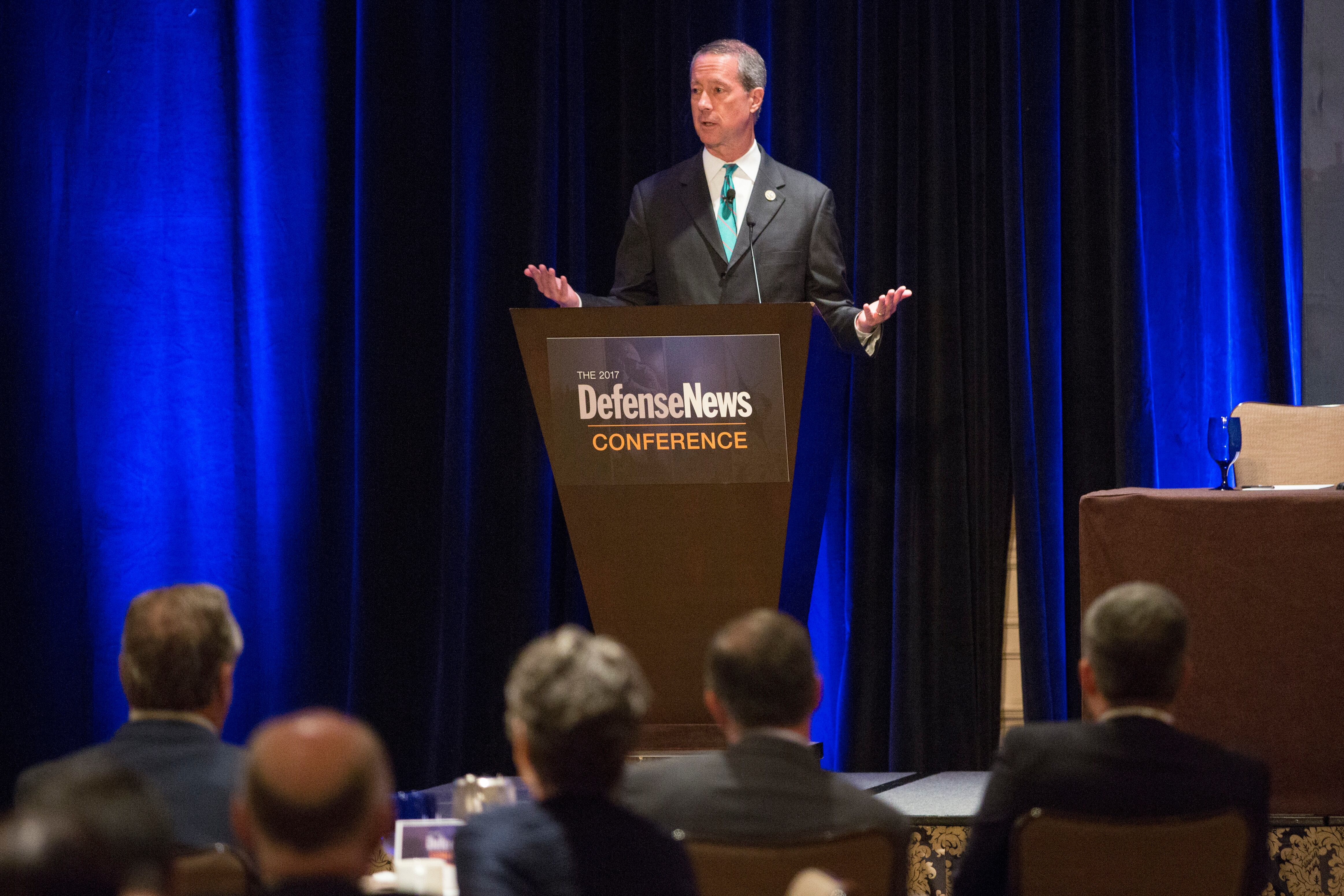WASHINGTON — The Pentagon is pushing back on reports that it seeks to classify previously public information about its future spending plans, with the department insisting that the transparency of this information that is public as part of the regular budget rollout process will not change.
The Future Years Defense Program provides spending projections for how the Department of Defense plans to invest its money over the coming five-year period. While the numbers are not locked in and regularly change year by year, the projections can provide valuable information to the public and industry about what the department views as priorities and where programs might be going.
Information about a legislative proposal from the Pentagon seeking to classify FYDP data was published Monday by Steven Aftergood of the Federation of American Scientists. Aftergood wrote that the proposal would “make it even harder for Congress and the public to refocus and reconstruct the defense budget.”
It is traditional for FYDP numbers to be included as part of the budget rollout, as well as be included in program-by-program breakdowns.
However, Pentagon spokesman Chris Sherwood said that the legislative language is not aimed at information that is currently made public during the normal budget process. Instead, it is focused on a requirement in the fiscal 2018 National Defense Authorization Act on what is provided to Congress.
“The 2018 NDAA required a formal unclassified version of the FYDP report,” Sherwood said in a statement. “The Department has not to date complied with that request because we are very concerned that providing that level of detail for the outyears might put critical information at risk and breach classification standards."
“The DoD is exploring all possible paths forward, including requesting relief from the new requirement, as well as trying to determine how much information can safely be public in addition to all the budget information already made available,” he continued.
“It is important to note that there is a difference between a formal Unclassified FYDP report and the unclassified outyear data for any given program that people often refer to as the FYDP for a program. We have and will continue to provide the classified FYDP as we have since 1989. There will be no reduction in any currently provided information,” he added.
Asked specifically if that meant information about the FYDP that is usually included in public budget documents provided to media, Sherwood said: “The legislative proposal would not affect or change how DoD currently provides budget information.”
Whether that assurance will satisfy advocates of keeping the FYDP open is uncertain, but the DoD appears behind the ball on convincing Congress that less transparency is a good idea.
RELATED

Speaking to reporters on Thursday, Rep. Mac Thornberry, R-Texas., the ranking member on the House Armed Services Committee, said he had only learned of the proposal when reports emerged, but indicated that any attempt to limit information about the FYDP is unlikely to meet a warm reception on Capitol Hill.
“Obviously my inclination is: That’s a bad idea,” Thornberry said. “I have not heard the department’s justification for it. But I would say they’ve got a pretty high evidentiary threshold to overcome, to get Congress [to] go along with classifying the five-year FYDP.”
Thornberry said he understands the concern, elucidated in the DoD proposal, that modern computing techniques could allow a foreign competitor to gather information about American plans from the data. But taxpayers deserve to know how their money will be spent in the future, the former committee chairman said, and that outweighs such concerns at the moment.
The House believes “that the greater good is the transparency with the American people. So that’s our default position, I think in both parties,” Thornberry said. “They hadn’t made their case to me yet, but I think it’s going to be hard for them to overcome that default position.”
The Pentagon ultimately benefits from more openness when it comes to discussions on the budget, said Tom Mahnken, a former Pentagon official who is now president and CEO of the Center for Strategic and Budgetary Assessments.
“It clearly is important to protect certain aspects of the U.S. defense budget from disclosure. The Defense Department has successfully met that challenge for decades,” Mahnken said. “But there is also a compelling case for disclosing how the Defense Department plans to spend its resources and whether its budget is aligned with its strategy.
“Transparency ultimately helps the Defense Department make the case for the resources it needs in Congress as well as the public at large.”
Aaron Mehta was deputy editor and senior Pentagon correspondent for Defense News, covering policy, strategy and acquisition at the highest levels of the Defense Department and its international partners.








